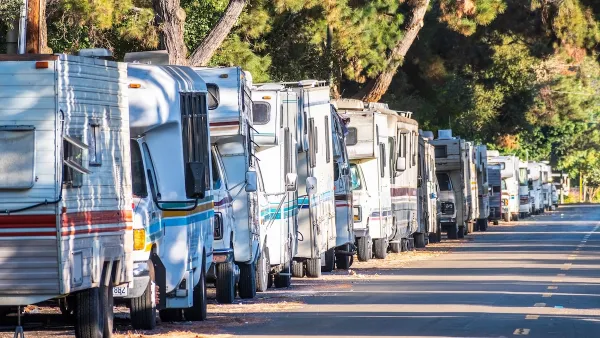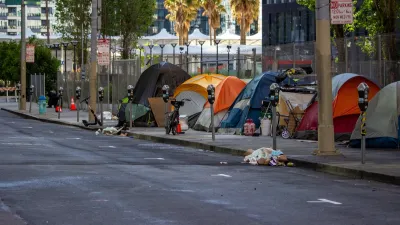The state’s attempt to decentralize emergency homeless shelters yielded poor results, leading to a decision to develop a “transformative” intake campus with wraparound services.

The Utah Homeless Services Board plans to build a new “transformative, centralized” shelter for unhoused residents, acknowledging that a prior plan to redistribute shelter beds across three facilities led to high costs and a shortage of available beds.
As Katie McKellar explains in Utah News Dispatch, “In 2019, the Road Home’s old downtown homeless shelter that some nights sheltered more than 1,000 people shut down after years of heartburn over its impact to the Rio Grande area and painstaking political wrangling to site three new homeless resource centers meant to replace it with a “scattered sites” model, meant to break up populations into smaller facilities.”
Now, the state wants to take a “more holistic and permanent approach” to reducing homelessness and providing services. The Board directed the Office of Homeless Services to identify three potential sites appropriate for a 30-acre campus and submit a master plan including “programmatic and structural schematics, costs, best practices from other similar institutions, and definitions of the success outcomes that will be measured and evaluated” by January 15, 2025.
The Board called for the campus to be built by October 1, 2025 with beds that are “low barrier” and easily accessible year-round. While details on the campus are still fuzzy, state homeless coordinator Wayne Niederhauser says it will include case management, healthcare, and other wraparound services, serving as an intake hub.
FULL STORY: Utah homeless board OKs search for up to 1,200-bed ‘centralized campus.’ What now?

Planetizen Federal Action Tracker
A weekly monitor of how Trump’s orders and actions are impacting planners and planning in America.

Congressman Proposes Bill to Rename DC Metro “Trump Train”
The Make Autorail Great Again Act would withhold federal funding to the system until the Washington Metropolitan Area Transit Authority (WMATA), rebrands as the Washington Metropolitan Authority for Greater Access (WMAGA).

The Simple Legislative Tool Transforming Vacant Downtowns
In California, Michigan and Georgia, an easy win is bringing dollars — and delight — back to city centers.

The States Losing Rural Delivery Rooms at an Alarming Pace
In some states, as few as 9% of rural hospitals still deliver babies. As a result, rising pre-term births, no adequate pre-term care and harrowing close calls are a growing reality.

The Small South Asian Republic Going all in on EVs
Thanks to one simple policy change less than five years ago, 65% of new cars in this Himalayan country are now electric.

DC Backpedals on Bike Lane Protection, Swaps Barriers for Paint
Citing aesthetic concerns, the city is removing the concrete barriers and flexposts that once separated Arizona Avenue cyclists from motor vehicles.
Urban Design for Planners 1: Software Tools
This six-course series explores essential urban design concepts using open source software and equips planners with the tools they need to participate fully in the urban design process.
Planning for Universal Design
Learn the tools for implementing Universal Design in planning regulations.
Smith Gee Studio
City of Charlotte
City of Camden Redevelopment Agency
City of Astoria
Transportation Research & Education Center (TREC) at Portland State University
US High Speed Rail Association
City of Camden Redevelopment Agency
Municipality of Princeton (NJ)





























